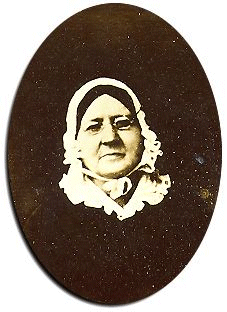Mary Young Pickersgill

A resident of Baltimore for more than fifty years, Mary Young Pickersgill was a successful Baltimore businesswoman and a local humanitarian. However, Mary Pickersgill’s greatest contribution to Maryland and to the entire United States was as a flag maker during the War of 1812. The flag she made became the inspiration for Francis Scott Key to write the poem that has become the national anthem of the United States of America. Today that flag resides in the Smithsonian Institution’s National Museum of American History.
Mary Young was born in Philadelphia, Pennsylvania in 1776. She learned the flag-making trade from her mother, Rebecca Young, who made ensigns, garrison flags and continental standards during and after Revolutionary War. Her family first moved to Baltimore, Maryland when she was a child. In 1795, she married John Pickersgill and moved back to Philadelphia until his death.
Mary returned to Baltimore in 1807 with her widowed mother and young daughter, Caroline. In her home at 44 Queen Street (now 844 E. Pratt Street), she established a flag-making business, where she successfully supported her family, by designing, sewing and selling “silk standards, cavalry and division colours of every description,” including signal and house flags for the U.S. Army, U.S. Navy, and merchant ships that frequented Baltimore’s harbor. By 1820, she was able to purchase the house she had been renting and lived there for the remainder of her life.
One hundred and fifty years before American women entered the business world, Mary Pickersgill was a successful businesswoman and philanthropist, whose efforts made Baltimore a more humane society. She actively addressed social issues such as housing, job placement assistance and financial aid for disadvantaged women—decades before these issues were prominent concerns in society. From 1828 until 1851, Mary Pickersgill was President of the Impartial Female Humane Society that helped impoverished families with school vouchers for children and employment for women. Under her presidency, the Society established a home for aged women in 1850. By 1869, there were 48 residents and, in 1863, a Men’s Home was added, with 27 residents. Today, the Impartial Female Humane Society is known as the Pickersgill Retirement Community, located in Towson, Maryland—a living testimony of Mary Pickersgill’s humanitarian contributions to society.
While her business success and humanitarian contributions deserve acclaim, Mary Pickersgill’s national contribution was making the 30x42 foot American flag that flew over Fort McHenry during the 1814 Battle of Baltimore on September 13th and 14th. The United States was at War with Great Britain and Baltimore was preparing for an eventual attack. Major George Armistead, commander of the forces at Fort McHenry, commissioned Mrs. Pickersgill to sew a flag “so large that the British will have no difficulty seeing it from a distance.” She was able to hand sew the flag in just six weeks with the help of her daughter, two nieces and two African American servants. It contained over 400 yards of fabric; each stripe was two feet wide and each star measured two feet from tip to tip. The result was an enormous American flag that could be seen for miles from the Fort. When the British attacked Baltimore, Francis Scott Key saw Mrs. Pickersgill’s flag while he was held captive on a British ship and was inspired to compose the poem that became the national anthem of the United States. One of the most important artifacts at the Smithsonian, this flag is undergoing an $18 million restoration and will be the centerpiece of the redesigned National Museum of American History.
Mary Pickersgill’s home at 844 E. Pratt Street, Baltimore, was opened in 1927 as the Star-Spangled Banner Flag House Museum and in 1969 was designated a National Historic Landmark. In 1933, the Baltimore & Ohio Railroad Company named a dining car in her honor and a World War II Liberty Ship carries her name.
Biography courtesy of the Maryland Commission for Women, 2002.
